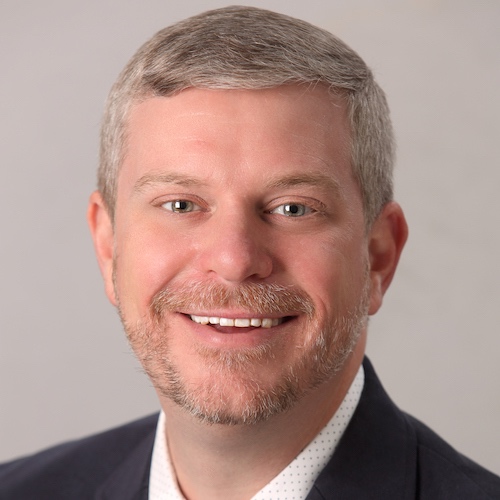Mitigating on-the-job stress: Stress mapping with artificial intelligence
March 29, 2023
USC Chan’s Shawn Roll leading interdisciplinary team on $1.1M National Science Foundation grant for managing, mitigating on-the-job stress.
Artificial Intelligence Faculty Health and Wellness Research Technology
By Mike McNulty for The Explorer Journal 2023
The World Health Organization has called stress the “health epidemic of the 21st century” — and that was before the Covid-19 pandemic.
While a highly personalized phenomenon, job-related stress is consistently cited as the primary source of stress in adults’ lives. According to Gallup’s State of the Global Workplace: 2022 Report, 50 percent of workers in the United States and Canada reported experiencing “a lot” of stress during their previous workday.
For many, work-related stress is painfully obvious. Musculoskeletal tension, headaches and gastrointestinal symptoms are common physical symptoms of stress, while irritability, distractibility, fatigue and decreased motivation are frequent mental health symptoms. According to the American Institute of Stress, an estimated one million workers are absent from work every day due to stress, and its estimated annual costs total more than $300 billion in lost time, decreased productivity and accidents.
But because so few employees have actionable insights into the ways that on-the-job activities and the physical and social environments contribute to stress and other health outcomes, workplace stress experiences can form vicious cycles that are difficult to break.
USC Chan Associate Professor Shawn Roll looks to disrupt, if not break them, with his new four-year, $1.1 million grant from the National Science Foundation.
By gathering a variety of data from workers, the workplace and the environment, Roll and colleagues will develop multi-factor models that illustrate how stress manifests in the workplace and in workers’ lives. Those models will then help build personalized solutions for enabling workers to improve their self-awareness, better manage workplace stressors and, ultimately, improve their own work-related health and well-being.
“My career to this point has focused on addressing worker health and well-being using a broad lens to identify applications across the general workforce,” Roll says. “But for this project, we’ll be using technologies to help individual workers understand their own stress on their own terms. It’s analogous to precision medicine — identifying what works best for each individual.”
Better worker health through data
The project will capture different types of data from the person, the built environment and the socioemotional environment at work. Interviews, focus groups, real-time assessments, mobile devices, wearable technologies and embedded sensors in the environment will all help researchers understand the ebb and flow of stress experiences as workers engage in different tasks across different workspaces and sites. Those include not only formal work environments, per se, but everywhere else that modern-day work is conducted, from the kitchen table to the corner coffee shop.
Although the term “stress” typically carries negative connotations, the researchers recognize that there is such a thing as positive stress, also known as eustress, which can feel energizing and be essential to productivity. Differentiating between types of stress experiences will be a key component of the study.
“We know eustress can lead to the experience of flow states when you’re challenged, in the moment and you view things as opportunities,” Roll says. “But in a lot of environments, workers don’t always have full control. So our goal isn’t necessarily to achieve a stress-free environment, but to understand what is causing stress and how to balance bad and good stress, the negative stress-inducing pressures with positive opportunities and challenges.”
Once data are integrated, the researchers hope to identify patterns to inform personalized solutions for better self-awareness and management of work-related health and well-being.
“Who are you, how do you perform, and when you engage in an activity or step into a space, how are you engaging in that activity and space?” Roll asks. “What’s causing, for example, your neck pain? We want to help you stop, step back and figure out what you can do to better manage it.”
Interdisciplinary experts teaming up again
To do that, Roll will look to his co-principal investigators: Gale Lucas, Shrikanth Narayanan and Burcin Becerik-Gerber, scientists at the USC Institute for Creative Technologies and the USC Viterbi School of Engineering. Their expertise in human-technology interfaces, remote sensing and machine learning discovery systems will help identify the most valuable combinations of data for personalized, automated and/or technology-supported intervention approaches for stress management.
“Not only can we map people’s physiological and personal responses to let them know how they’re doing at work, but my colleagues are looking at automating the process of stress mapping with artificial intelligence to meaningfully account for a wide range of variables that include additional data from the physical and social environments,” Roll says.
It’s not the first time Roll has joined Viterbi faculty members on studies funded by the NSF, which is the independent federal governmental agency for science and engineering research, akin to the National Institutes of Health. Roll, Lucas and Becerik-Gerber previously worked together on a $667,000 NSF grant to design a workstation that uses artificial intelligence to learn about and adjust to worker preferences and patterns, with the goal of improving overall well-being.
The new study, he says, is a natural follow-up to their intelligent workstation project.
“Most of my previous research has identified what’s good en masse,” Roll says. “But we are all very different individuals, and whenever a principle is applied en masse there are still people who fall through the cracks. So this new project is trying to understand individual stress factors, use technologies for ongoing monitoring and then make recommendations that are far more customized and useful to individuals.”
The grant is administered by the Smart and Connected Health initiative, a NSF-NIH interagency program exploring how next-generation computer and information science and engineering approaches can transform health and medicine.
Roll and Lucas are also co-principal investigators on a recently funded $1.8 million NSF grant led by Becerik-Gerber to develop and test a sensory-enhanced workstation for remotely operating demolition machines in the construction industry. While this so-called teleoperation can increase workplace safety (because you can’t get crushed by a wrecking ball if you’re not actually standing on the jobsite), there is limited understanding at the moment on how to conduct remote operation effectively and safely within dynamic construction sites.
Roll acknowledges that working on two large-scale grants totaling nearly $3 million is a rare achievement, in NSF terms. In 2022, USC was awarded only ten NSF grants that received individual funding greater than $1 million.
“I am so grateful for the continued support of the USC Chan Division in my research efforts, and I cannot be happier with the collaborative efforts of our transdisciplinary team.”
⋯
Next by tag Faculty ⟩ Health and Wellness ⟩ Research ⟩ Technology ⟩







